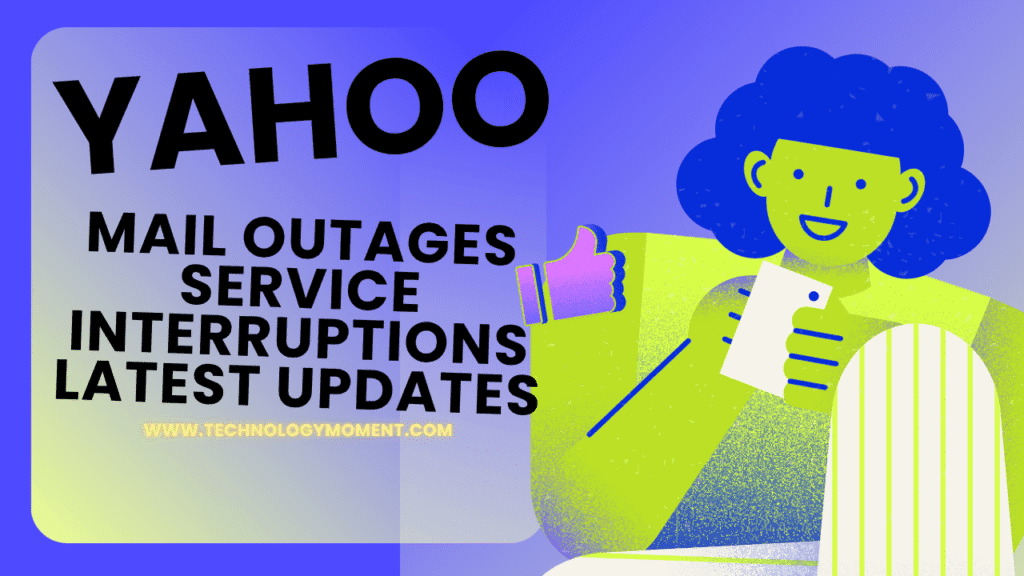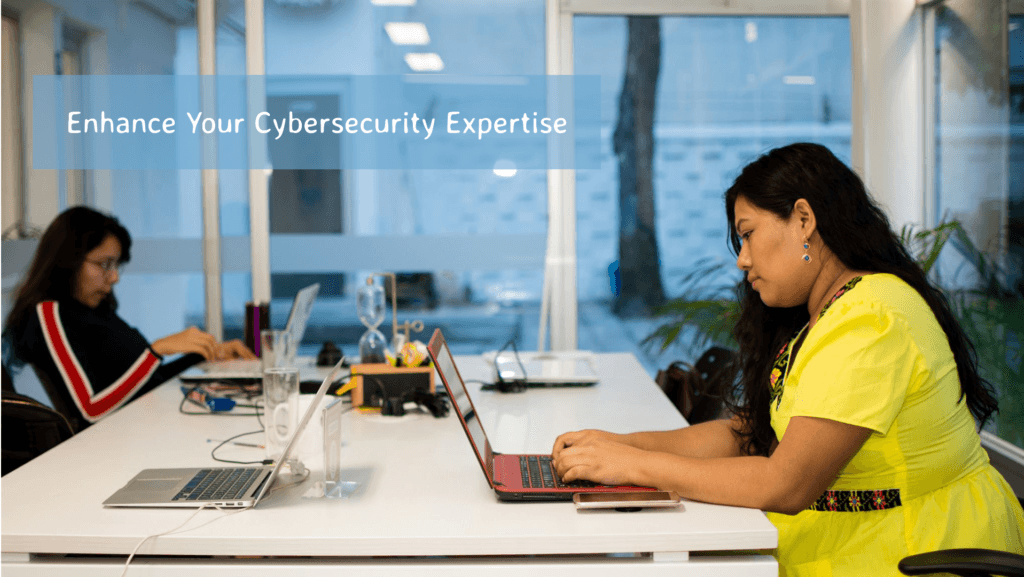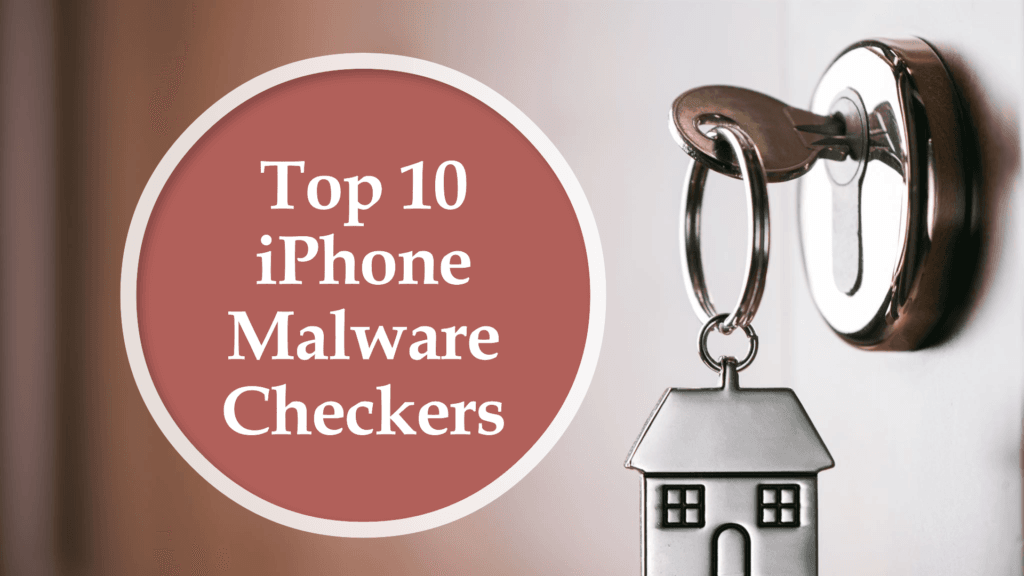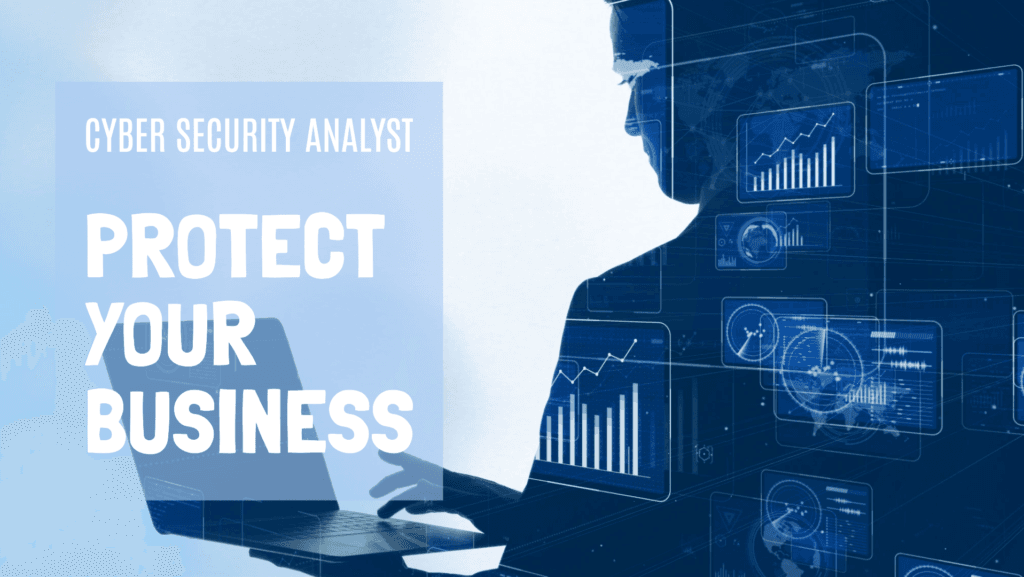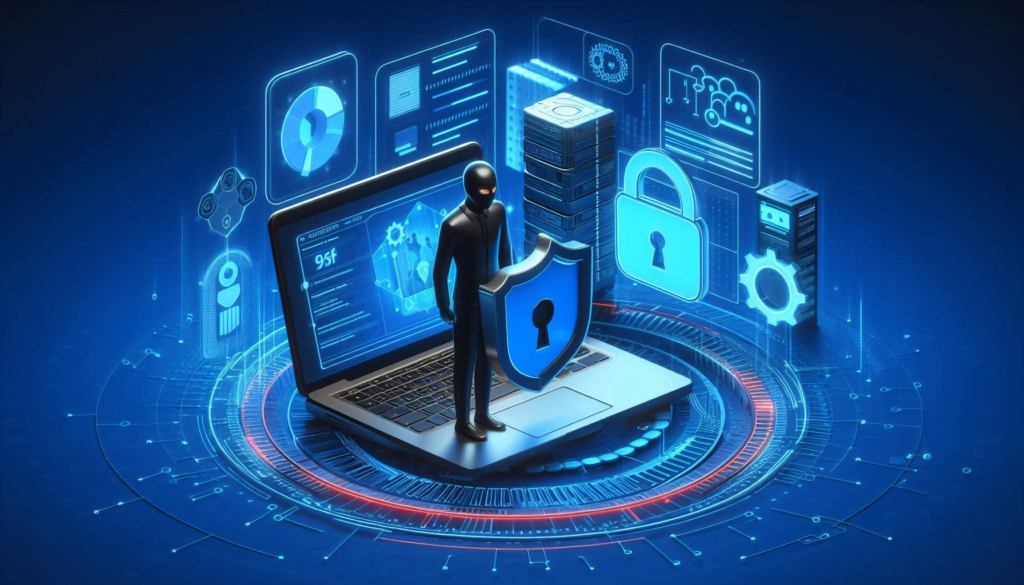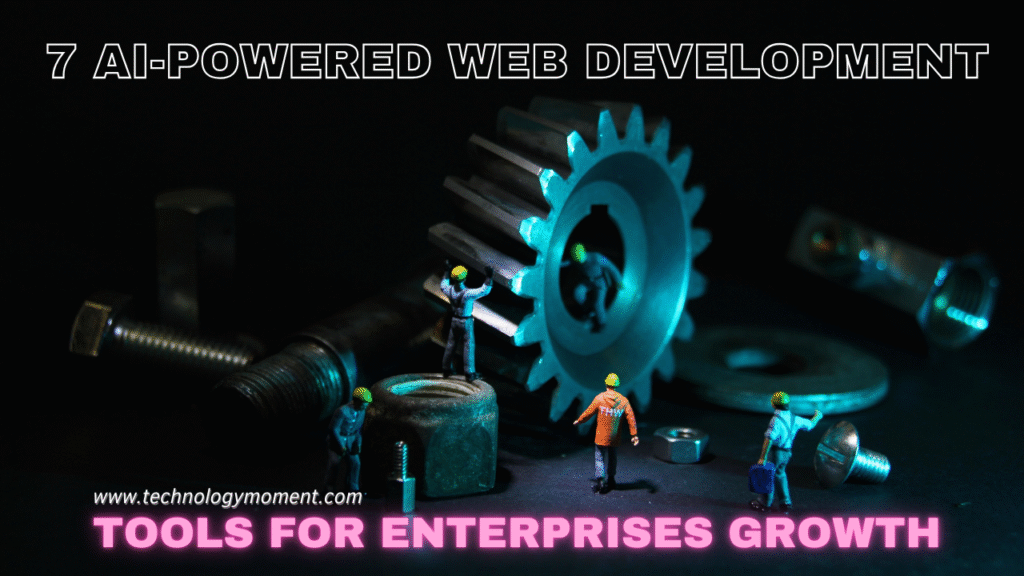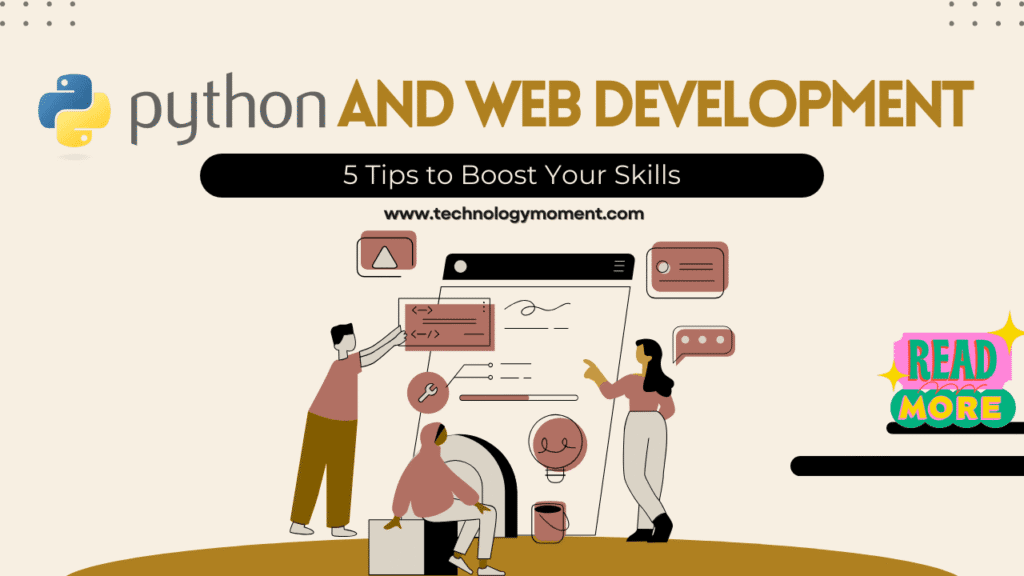Technology Moment is your go-to destination for staying ahead in the ever-evolving world of cybersecurity and technology. In a digital landscape where threats are constantly evolving, having the right security tools is essential for safeguarding data and infrastructure. Our latest blog, “Top 5 Security Architect Tools You Can’t Ignore,” dives deep into the most effective tools every security professional needs to know. Stay informed, stay secure—explore the cutting-edge solutions shaping the future of digital protection with Technology Moment.
In an era where cyber threats are becoming increasingly sophisticated, protecting sensitive data and systems has never been more crucial. Organizations across all industries face rising challenges in securing their digital environments from cyberattacks, data breaches, and unauthorized access. This escalating threat landscape makes cybersecurity not just an IT concern but a business-critical priority.
Security architects play a pivotal role in designing and implementing robust security frameworks that safeguard an organization’s digital infrastructure. However, to effectively manage such complex environments, they require specialized tools tailored to identify vulnerabilities, prevent attacks, and ensure compliance with security standards.
The right security architect tools can help streamline security operations by offering features like real-time threat intelligence, network monitoring, encryption, and automated responses to security incidents. These tools empower security teams to detect threats early, mitigate risks effectively, and ensure continuous protection of critical assets.
In this blog post, we’ll explore the top 5 security architect tools that can help professionals build and maintain secure systems. Whether you’re a cybersecurity expert or a business owner aiming to enhance your security posture, understanding these tools will give you an edge in fortifying your organization’s defense against cyber threats.
What Are Security Architect Tools?
Security architect tools are specialized software solutions designed to assist cybersecurity professionals in designing, managing, and securing an organization’s IT infrastructure. These tools provide the necessary capabilities to identify, prevent, and mitigate cyber threats, ensuring the safety of data, applications, and systems.
At their core, security architect tools help in creating a secure framework for an organization’s digital environment. They are used to design a layered defense system, often referred to as “defense-in-depth,” where multiple security measures work together to protect sensitive assets from various types of cyberattacks.
Core Functions of Security Architect Tools:
Security architect tools serve multiple purposes within an organization’s cybersecurity strategy. Their primary functions include:
- Threat Identification and Prevention: Tools use threat intelligence and real-time monitoring to detect suspicious activities and potential vulnerabilities.
- Risk Management: Security architects use these tools to assess risks associated with specific configurations or system designs.
- Compliance Management: Many industries have strict data protection regulations (e.g., GDPR, HIPAA). Security tools help ensure adherence to these standards.
- Network Security Management: These tools can manage firewalls, intrusion detection systems (IDS), and virtual private networks (VPNs) to secure network traffic.
- Data Encryption: Ensuring sensitive information is protected through encryption both in transit and at rest.
Key Components of Security Architect Tools:
Security architect tools typically offer a combination of the following components:
- Vulnerability Scanners: Identify security weaknesses in systems and applications.
- Intrusion Detection and Prevention Systems (IDPS): Monitor network traffic for malicious activities.
- Security Information and Event Management (SIEM): Collect and analyze security data for threat detection and incident response.
- Endpoint Protection: Safeguard devices such as laptops and smartphones from threats.
- Cloud Security Management: Protect cloud-based assets and monitor cloud infrastructure.
Table of Contents
Why Security Architect Tools Are Essential?
In the ever-evolving landscape of cybersecurity threats, security architect tools have become indispensable for businesses and organizations. They play a pivotal role in safeguarding digital assets, ensuring compliance, and minimizing the risk of data breaches. Here’s a detailed breakdown of why these tools are crucial:
1. Proactive Threat Detection and Prevention
Cyber threats are becoming more sophisticated every day. Security architect tools help organizations stay ahead of potential attacks by providing proactive threat detection capabilities. They continuously monitor network traffic, identify unusual behavior, and alert security teams to take action before damage occurs.
- Example: Tools like Palo Alto Networks Prisma Cloud use advanced machine learning algorithms to detect potential threats in real time.
2. Enhanced Network Visibility
Without complete visibility into network activities, securing an IT infrastructure becomes challenging. Security architect tools provide a centralized dashboard that displays network activity, user behavior, and potential vulnerabilities across all endpoints.
- Benefit: This visibility helps in identifying weak points and reducing blind spots in the security architecture.
3. Automation and Efficiency
Manually managing security processes can be time-consuming and error-prone. Security tools automate routine tasks like vulnerability scanning, patch management, and incident reporting. This automation improves efficiency and ensures a quicker response to threats.
- Key Advantage: Automated threat detection reduces human error and improves the speed of response during critical situations.
4. Data Protection and Compliance
Data privacy laws and regulations such as GDPR, HIPAA, and CCPA demand strict data protection measures. Security architect tools ensure that sensitive data remains protected and help businesses meet regulatory requirements by providing encryption, access control, and audit features.
- Why It Matters: Failing to comply with regulations can result in hefty fines and reputational damage.
5. Risk Assessment and Management
Security tools assist in identifying, assessing, and mitigating risks before they can be exploited. They provide detailed risk assessments and suggest corrective actions, helping organizations prioritize security measures based on threat severity.
- Example: IBM Security QRadar offers in-depth risk analytics and helps organizations understand their security posture.
6. Incident Response and Recovery
When a security breach occurs, a rapid response is critical to minimize damage. Security architect tools streamline the incident response process by providing playbooks, forensic analysis, and recovery tools.
- Impact: Faster recovery minimizes downtime and financial losses.
7. Scalability for Growing Businesses
As businesses grow, so do their security needs. Security architect tools are designed to scale with the organization, providing flexible and customizable solutions for both small enterprises and large corporations.
- Benefit: Tools like Microsoft Azure Security Center offer cloud-based solutions that scale easily with business expansion.
8. Centralized Control and Management
Managing multiple security tools separately can be overwhelming. Security architect tools offer centralized control panels that allow IT teams to manage security policies, monitor threats, and control user access from a single interface.
- Efficiency Boost: This reduces complexity and makes it easier to enforce consistent security measures across the organization.
Key Features to Look for in Security Tools
When selecting a security architect tool, it’s crucial to focus on features that ensure comprehensive protection, efficiency, and ease of use. Here’s a detailed breakdown of the essential features to consider:
1. Threat Detection and Prevention
The core of any security tool lies in its ability to detect and prevent threats. Look for tools that offer:
- Real-Time Monitoring: Continuous analysis of network traffic and activities.
- Intrusion Detection Systems (IDS): Identifies unauthorized access attempts.
- Intrusion Prevention Systems (IPS): Blocks malicious traffic proactively.
- AI-Driven Threat Intelligence: Leverages machine learning to detect evolving threats.
2. Risk Assessment and Management
A top-notch security tool should evaluate potential risks and provide proactive solutions.
- Automated Risk Scoring: Ranks vulnerabilities based on severity.
- Asset Inventory Management: Identifies all assets and their security status.
- Security Posture Assessment: Evaluates overall network security health.
3. Compliance and Regulatory Support
Adhering to industry regulations is non-negotiable. Choose tools that offer:
- Pre-Built Compliance Frameworks: GDPR, HIPAA, ISO 27001 templates.
- Automated Reporting: Simplifies audit processes with detailed compliance reports.
- Policy Management: Ensures security policies align with regulatory standards.
4. Centralized Dashboard and User Interface
Ease of use is essential for effective tool adoption across teams.
- Intuitive UI: Simplifies navigation and monitoring.
- Centralized Management: Offers a single view for all security components.
- Customizable Alerts: Allows setting specific notifications for security events.
5. Scalability and Integration
As organizations grow, their security needs expand too.
- Multi-Cloud Support: Compatible with platforms like AWS, Azure, and GCP.
- API Integrations: Easily connects with other security tools and SIEM platforms.
- Modular Design: Allows expansion with additional features as needed.
6. Automated Incident Response and Remediation
Effective tools not only detect threats but also respond automatically.
- Automated Playbooks: Predefined response actions for specific threats.
- Threat Isolation: Quarantines compromised systems instantly.
- Forensic Capabilities: Captures data for post-incident analysis.
7. Endpoint and Network Security Management
Comprehensive security tools should cover both endpoints and networks.
- Endpoint Detection and Response (EDR): Monitors individual devices.
- Network Access Control (NAC): Regulates device access to the network.
- Zero Trust Security Model: Enforces strict identity verification for all devices.
8. Real-Time Analytics and Reporting
Data-driven insights help improve security strategies.
- Visual Analytics: Graphs and dashboards for easier analysis.
- Log Management: Centralizes and stores security logs for audits.
- Behavior Analytics: Detects anomalies in user behavior patterns.
9. Performance Optimization and Minimal Latency
Security should not slow down network performance.
- Low Latency Processing: Ensures minimal impact on network speed.
- Load Balancing: Distributes traffic for optimal performance.
- Resource Efficiency: Balances security features without overloading systems.
10. Cost-Effectiveness and Licensing
Budget is a critical factor when choosing tools.
- Transparent Pricing Models: Clear cost breakdowns with no hidden charges.
- Flexible Licensing Options: Pay-as-you-go or subscription-based pricing.
- ROI Measurement Tools: Metrics to assess the value of the tool over time.
Top 5 Security Architect Tools You Can’t Ignore
When it comes to safeguarding a digital environment, security architect tools play a pivotal role. They offer advanced functionalities like threat detection, compliance management, and vulnerability assessments to ensure robust protection. Here’s a closer look at the top 5 security architect tools that stand out in the industry.

1. Palo Alto Networks Prisma Cloud
Key Features:
- Cloud Security: Prisma Cloud offers comprehensive security across multi-cloud environments, such as AWS, Microsoft Azure, and Google Cloud.
- Threat Detection and Prevention: It uses machine learning to identify vulnerabilities and potential threats in real-time.
- Compliance Monitoring: It ensures that cloud services comply with industry standards like PCI-DSS, HIPAA, and GDPR.
- Identity and Access Management (IAM): Prisma Cloud provides strong IAM tools to ensure only authorized users have access to sensitive information.
- API Security: Helps in detecting any vulnerabilities in APIs, preventing possible data breaches.
Pros and Cons:
- Pros: Highly scalable, supports a wide variety of cloud platforms, real-time threat intelligence, excellent compliance management.
- Cons: Can be complex for smaller organizations, pricing may not be affordable for small businesses.
Best Use Cases:
- Large enterprises managing multi-cloud environments.
- Businesses needing advanced compliance and risk management.
- Organizations looking to implement a proactive security posture using real-time threat intelligence.
2. IBM Security QRadar
Key Features:
- Security Information and Event Management (SIEM): QRadar provides centralized logging and event management for monitoring and detecting threats across the network.
- Real-time Threat Intelligence: Utilizes advanced analytics and machine learning to detect and respond to security incidents.
- Incident Response: QRadar’s incident response capabilities enable teams to quickly identify and mitigate security events.
- Integration with Other Tools: It integrates well with other security tools, allowing for comprehensive threat management and reporting.
- Automated Reporting: QRadar generates detailed, customizable reports on security incidents, vulnerabilities, and compliance status.
Pros and Cons:
- Pros: Strong in detecting advanced threats, highly customizable, effective integration with other IBM and third-party tools.
- Cons: Steep learning curve, expensive compared to other SIEM tools.
Best Use Cases:
- Organizations looking for an all-in-one SIEM solution.
- Large enterprises with complex security requirements and resources to implement a robust system.
- Security operations centers (SOCs) that need real-time threat intelligence and comprehensive incident management.
3. Fortinet Security Fabric
Key Features:
- Integrated Security System: Fortinet’s Security Fabric offers a unified platform that connects multiple security solutions, providing end-to-end visibility and control.
- Network Security: FortiGate firewalls are integrated with Security Fabric for advanced protection against network-based attacks.
- Automated Threat Response: The platform automatically detects and responds to emerging threats using AI and machine learning.
- Secure SD-WAN: Ensures secure, high-performance connections between distributed branches and cloud networks.
- Web Filtering and SSL Inspection: Provides protection against malicious web traffic and inspects encrypted traffic for hidden threats.
Pros and Cons:
- Pros: Comprehensive integration of multiple security layers, scalable, excellent for protecting distributed networks.
- Cons: Some features may be difficult to configure without expert knowledge, expensive for small businesses.
Best Use Cases:
- Enterprises looking for a comprehensive network security solution.
- Organizations with a distributed workforce that require secure connections and threat mitigation.
- Companies seeking to integrate firewall, VPN, and web filtering into a single platform.
4. Cisco SecureX
Key Features:
- Unified Security Management: Cisco SecureX provides a centralized platform to manage and respond to security threats across your entire network.
- Threat Intelligence Sharing: It integrates with Cisco’s Talos Intelligence Group, offering real-time threat data for fast, accurate incident response.
- Automation and Orchestration: It automates security tasks and workflows, reducing the time to detect and respond to incidents.
- Cloud and On-premise Support: SecureX supports both cloud and on-premise infrastructures, allowing for flexibility in deployment.
- Integrated Analytics: It offers advanced analytics capabilities, allowing security teams to derive insights from data to improve decision-making.
Pros and Cons:
- Pros: Great for organizations already using Cisco products, highly integrative with other security tools, strong analytics and reporting.
- Cons: Can be complex for organizations without prior Cisco infrastructure, the full potential of the platform may not be realized without all Cisco products.
Best Use Cases:
- Businesses with existing Cisco networks and security tools.
- Organizations looking to centralize and automate their security operations.
- Large enterprises needing advanced threat intelligence and analytics capabilities.
5. Microsoft Azure Security Center
Key Features:
- Cloud Security Posture Management: Azure Security Center offers continuous assessment of cloud workloads to ensure they comply with security best practices.
- Threat Detection and Prevention: It provides advanced threat protection for cloud resources, detecting anomalous behavior and suspicious activity.
- Compliance Tracking: Azure Security Center tracks compliance with industry standards like ISO 27001, SOC 2, and NIST.
- Security Recommendations: The platform provides actionable security recommendations, helping users remediate vulnerabilities.
- Integration with Azure Sentinel: Azure Security Center integrates with Azure Sentinel for extended SIEM capabilities.
Pros and Cons:
- Pros: Deep integration with Microsoft Azure, easy-to-use interface, effective compliance tracking and remediation tools.
- Cons: Limited support for non-Azure cloud platforms, pricing may be prohibitive for smaller organizations.
Best Use Cases:
- Organizations already using Microsoft Azure for cloud infrastructure.
- Enterprises requiring strong compliance tracking and cloud threat management.
- Businesses seeking an easy-to-use yet powerful security solution for Azure-based environments.
How to Choose the Right Security Architect Tool?
Choosing the right security architect tool is crucial for creating a secure environment for your organization’s IT infrastructure. Here are some key factors to consider when selecting the ideal security tool for your needs:
1. Understand Your Specific Security Needs
Before evaluating any tool, it’s important to understand your organization’s unique security requirements. This includes identifying:
- Type of Infrastructure: Are you working with on-premises systems, cloud environments, or a hybrid structure? Different tools specialize in different environments.
- Security Concerns: Do you need a tool for threat detection, compliance management, incident response, or something else? Knowing your priorities will help you focus on the most relevant solutions.
- Scalability: Does the tool have the capacity to grow with your organization’s evolving security needs?
2. Evaluate Tool Integration Capabilities
Security tools should integrate seamlessly with your existing IT ecosystem. Consider the following:
- Compatibility with Existing Systems: The tool should work well with your current network architecture, cloud platforms, and security policies.
- Integration with Other Tools: Often, organizations use a mix of security tools for a layered defense. Ensure the tool can integrate easily with other systems, such as firewalls, intrusion detection systems, and SIEM solutions (Security Information and Event Management).
3. Check for Automation Features
Automation is essential for modern security tools. With the rise in cyber threats, the ability to automatically detect, mitigate, and respond to incidents is vital for reducing reaction times and human error. Look for features like:
- Automated Threat Detection: The tool should have the capability to detect abnormal behaviors or potential vulnerabilities without manual input.
- Incident Response Automation: The tool should help automate the process of responding to breaches, from containment to reporting.
4. Assess User-Friendliness and Training Support
Security tools can be complex, so choose one that is intuitive and easy to use. A user-friendly interface can save time and reduce the risk of errors. Also, check if the tool offers:
- Comprehensive Documentation: Clear user guides, manuals, and video tutorials are important for getting the most out of the tool.
- Training and Support: A reliable vendor should offer regular training and responsive customer support to ensure you can resolve any issues promptly.
5. Look for Compliance and Regulatory Support
Depending on your industry, you may be subject to various regulations and compliance standards (such as GDPR, HIPAA, or PCI-DSS). The security tool should help ensure that your security infrastructure adheres to these regulations. Features to look for include:
- Automated Compliance Reporting: The tool should automatically generate compliance reports, reducing manual work and ensuring timely audits.
- Real-Time Compliance Monitoring: Continuous monitoring to ensure your systems stay compliant with relevant regulations.
6. Consider the Cost and Budget
While it’s tempting to opt for the most advanced security tool available, cost is always a key factor. Balance your budget with the features and benefits you need:
- Pricing Structure: Many security tools operate on subscription-based models, with varying tiers based on functionality. Evaluate whether the pricing is sustainable for your organization.
- Return on Investment (ROI): Focus on how the tool will help mitigate security risks and potential losses, which justifies the cost.
7. Investigate the Vendor’s Reputation and Reliability
A tool is only as good as the vendor behind it. Research the vendor’s reputation, history in the industry, and user feedback. You want a reliable and trustworthy partner who consistently updates and improves their tool. Look for:
- Customer Reviews and Testimonials: Check online reviews, case studies, or customer success stories to see how the tool has worked for other organizations.
- Vendor Support and Updates: Does the vendor provide timely software updates and patches? Are they responsive to customer queries?
8. Test the Tool with a Trial Version
Most security tools offer free trials or demo versions that allow you to test their functionality before committing to a full purchase. This is an excellent opportunity to:
- Evaluate the User Experience: Test the ease of use, configuration, and overall workflow of the tool.
- Test Performance: Assess how well the tool performs in real-time scenarios and whether it addresses your specific security challenges.
9. Focus on Reporting and Analytics
Effective reporting and analytics are crucial for monitoring your network’s security. The tool should offer:
- Real-Time Alerts: Notifications about security incidents that need immediate attention.
- Detailed Dashboards: Intuitive and customizable dashboards that provide insights into security performance, trends, and threats.
- Custom Reports: The ability to generate tailored reports that meet your organization’s requirements.
Benefits of Using Security Architect Tools
The benefits of security architect tools are substantial for organizations striving to protect their digital assets and sensitive data. These tools are essential for improving the security architecture of IT environments, ensuring businesses stay ahead of cyber threats. Below are some of the key benefits:
1. Enhanced Threat Detection and Response : Security architect tools provide real-time monitoring and detection capabilities that enable teams to identify potential security threats before they escalate. Many tools come with advanced threat intelligence, allowing them to spot anomalies and unusual activities that might indicate a breach. By leveraging these tools, security teams can respond quickly, minimizing the damage of potential attacks.
2. Comprehensive Risk Management : A well-implemented security architecture tool helps organizations proactively assess risks, such as vulnerabilities in the network or application layer. Security tools can conduct thorough assessments, identify high-risk areas, and suggest solutions to mitigate those risks. This helps reduce the overall exposure to potential security incidents and ensures a proactive approach to risk management.
3. Improved Compliance and Regulatory Adherence : Compliance with industry regulations and standards (e.g., GDPR, HIPAA, PCI-DSS) is a crucial part of maintaining a secure environment. Security architect tools offer built-in features for compliance management, such as automated reporting, audit trails, and monitoring capabilities. These features help ensure that your organization is consistently meeting the requirements of various compliance frameworks, avoiding fines and penalties.
4. Streamlined Incident Response : In the event of a security breach, having the right tools in place is vital for a fast and efficient response. Security architect tools often come with incident response workflows and playbooks that guide teams through the proper steps during a security event. This ensures a well-coordinated response, reducing the time to contain and remediate incidents.
5. Automation of Security Tasks : Many security tools offer automation features that help reduce manual workloads. Routine tasks, such as patch management, vulnerability scanning, and log monitoring, can be automated to improve efficiency and reduce human error. Automation allows security architects to focus on more complex and strategic tasks while ensuring essential processes are handled consistently and promptly.
6. Cost Efficiency : While investing in security architect tools might seem costly upfront, these tools can ultimately save organizations significant amounts of money. By preventing data breaches, minimizing downtime, and ensuring compliance, security tools help avoid the financial and reputational costs associated with security incidents. Additionally, many tools are designed to scale, which means businesses can tailor them to their needs without overpaying for unnecessary features.
7. Enhanced Visibility and Reporting : Security architect tools provide centralized dashboards and detailed reports that allow security teams to gain comprehensive visibility into the organization’s security posture. These tools can generate regular reports on vulnerabilities, threats, incidents, and compliance status, helping stakeholders make informed decisions. The enhanced visibility ensures that security architects can continuously evaluate and improve security strategies.
8. Improved Collaboration Between Teams : Security architect tools often integrate with other business applications and IT systems, fostering collaboration between security teams and other departments. By providing a unified platform for tracking and addressing security issues, security tools ensure that all teams are aligned and working together towards a common goal of safeguarding the organization.
9. Scalability and Adaptability : As businesses grow, so do their security needs. Security architect tools are designed to scale alongside an organization, providing adaptable solutions that can grow with the business. Whether you’re expanding your network, adopting new cloud technologies, or integrating new applications, security tools can be easily adapted to protect new environments and systems.
10. Proactive Security Posture : Finally, using the right security tools promotes a proactive approach to cybersecurity. Rather than waiting for a breach to happen, security architect tools help you identify vulnerabilities, patch weaknesses, and prevent security risks before they become major problems. A proactive security posture significantly reduces the chances of successful attacks and minimizes the impact of any incidents that do occur.
Challenges in Implementing Security Tools
When it comes to implementing security architect tools, organizations often face several challenges that can hinder the effectiveness of these tools. Understanding these challenges is crucial to overcoming them and ensuring the success of the security infrastructure. Below, we explore the common challenges faced during the implementation of security tools and how to tackle them effectively.
1. Complexity of Integration
One of the most significant challenges in implementing security tools is the complexity of integrating them into existing IT systems. Organizations often use a mix of legacy systems and new technologies, making it difficult to ensure that security tools work seamlessly across all platforms. Integrating these tools without disrupting day-to-day operations requires careful planning, testing, and sometimes customization.
Solution: Before selecting any security tool, organizations should assess the compatibility of these tools with their existing infrastructure. Ensuring that the tool can integrate with other systems, such as firewalls, endpoint protection, or cloud services, will reduce the friction during implementation.
2. Lack of Skilled Personnel
Security architect tools are powerful, but they often require specialized knowledge to use effectively. Many organizations face a shortage of skilled professionals who are trained to configure, manage, and monitor security tools. As a result, even if the right tools are selected, there may not be enough expertise to implement them properly, leading to ineffective security measures.
Solution: Organizations can invest in training their current IT staff or hire experienced security professionals. Additionally, many security tool vendors offer training programs and certifications, which can help bridge the skills gap.
3. Cost Considerations
The cost of security tools can be a significant barrier for many organizations, especially small and medium-sized businesses (SMBs). The upfront cost of purchasing security tools, coupled with ongoing expenses for maintenance, updates, and support, can strain budgets.
Solution: To manage costs effectively, organizations should consider a phased implementation approach, where they prioritize the most critical areas of their infrastructure. Opting for scalable and cloud-based solutions can also help reduce upfront investment and allow businesses to pay for only what they use.
4. Resistance to Change
Another common challenge is resistance to change. Employees may be reluctant to adopt new tools or processes, especially if they are used to the existing methods. This resistance can slow down the adoption of security tools and may even lead to the abandonment of best practices for security.
Solution: Change management strategies are essential to overcoming resistance. By involving stakeholders early in the decision-making process and providing clear communication about the benefits of the new security tools, organizations can encourage buy-in and ease the transition.
5. Overwhelming Alerts and False Positives
Security tools, particularly those focused on threat detection and monitoring, can generate a large volume of alerts. When these alerts are not properly filtered or managed, it can lead to “alert fatigue,” where security teams may overlook critical threats due to the sheer volume of notifications. Additionally, false positives can waste valuable resources and time in investigating non-existent threats.
Solution: Proper configuration of security tools to fine-tune alerts and minimize false positives is essential. Leveraging automation and machine learning features within security tools can help prioritize alerts and reduce the workload on security teams.
6. Data Privacy and Compliance Concerns
Implementing security tools often involves handling sensitive data, such as personally identifiable information (PII) or business-critical data. Organizations must ensure that the tools comply with data privacy regulations such as GDPR, HIPAA, or PCI DSS. Failing to do so can result in legal penalties or reputational damage.
Solution: Organizations must choose security tools that are compliant with the relevant data privacy regulations. Before implementing a tool, conducting a compliance audit and working closely with legal teams can help ensure that all regulatory requirements are met.
7. Scalability Issues
As organizations grow, so do their security needs. A tool that works well for a small team may not be suitable for a large enterprise. Scalability issues arise when security tools cannot efficiently handle the increasing complexity of larger networks or more extensive data systems.
Solution: It’s essential to choose security tools that can scale with the organization. Cloud-based solutions, for example, tend to offer better scalability than traditional on-premises tools. Organizations should consider future growth when selecting tools and ensure they can be easily upgraded or expanded.
8. Managing Vendor Relationships
Many organizations rely on third-party vendors for security tools. However, managing multiple vendors can be challenging, particularly when each vendor has different support policies, service-level agreements (SLAs), and update schedules. Without proper coordination, vendor management can become a logistical nightmare.
Solution: Developing strong relationships with vendors is key to overcoming this challenge. Regular meetings and open communication channels will help streamline the process of troubleshooting, updates, and support.
Security Trends to Watch in 2025
The cybersecurity landscape is constantly evolving, with new challenges, innovations, and risks emerging each year. As we move into 2025, several key trends are set to shape the future of security architecture. Let’s dive into the critical security trends that security architects should keep an eye on in 2025.
1. AI and ML
Artificial Intelligence (AI) and Machine Learning (ML) are becoming essential components of modern cybersecurity strategies. In 2025, AI-driven tools will continue to enhance threat detection and response. These technologies can process vast amounts of data, identify patterns, and predict potential attacks before they happen.
- Predictive Analytics: AI will be used to anticipate emerging threats based on historical data, significantly reducing response times.
- Automation of Incident Response: Machine learning will enable automated decision-making, allowing security systems to respond to attacks in real time without human intervention.
Security teams will increasingly rely on AI and ML to manage the overwhelming volume of security data and improve the efficiency of their threat detection systems.
2. Zero Trust Security Models
Zero Trust is no longer just a buzzword—it’s becoming a fundamental approach to cybersecurity. In 2025, Zero Trust architecture will be the norm, as organizations shift from perimeter-based security to a model that assumes no one, whether inside or outside the network, can be trusted by default.
- Continuous Authentication: Zero Trust models will emphasize continuous verification, ensuring that users and devices are authenticated before every access attempt, regardless of their location.
- Micro-Segmentation: This approach divides networks into smaller, isolated segments to limit lateral movement in case of a breach.
Zero Trust will reduce the risk of insider threats and minimize the impact of cyberattacks by preventing unauthorized access to critical resources.
3. Cloud Security Expansion
As more businesses move their operations to the cloud, cloud security will remain a top priority in 2025. The hybrid and multi-cloud environment will require security solutions that can seamlessly protect cloud infrastructure, applications, and data.
- Cloud-Native Security: Security tools will be designed specifically for cloud environments, enabling continuous monitoring and automatic security updates.
- Data Privacy Regulations: With the rise of cloud adoption, new data privacy regulations will be implemented, demanding stronger protections for sensitive data in the cloud.
Organizations will need to ensure their cloud security posture is robust to prevent vulnerabilities introduced by the cloud transition.
4. Growing Importance of Privacy and Data Protection
As cyberattacks become more sophisticated, the focus on protecting personal and sensitive data will intensify in 2025. With the rise of privacy regulations like GDPR, CCPA, and others, companies will be held to higher standards for data protection.
- Encryption Technologies: Expect increased use of encryption at all stages of data processing—from storage to transit.
- Data Sovereignty: As more countries pass their own data protection laws, organizations will have to manage data across borders while adhering to localized regulations.
Security architects will need to integrate robust data protection strategies to ensure compliance and avoid costly fines.
5. Integration of Security into DevOps (DevSecOps)
DevOps (Development and Operations) practices have become common in many organizations, but now, security needs to be embedded directly into these processes. In 2025, DevSecOps will be an essential trend, ensuring that security is part of the software development lifecycle.
- Automated Security Testing: Security tests will be integrated into the CI/CD pipeline, enabling developers to detect vulnerabilities early in the development process.
- Shift Left Security: Security professionals will work more closely with developers to identify risks before code is deployed to production.
By integrating security into DevOps, organizations will reduce vulnerabilities in their software and applications, making security a proactive, rather than reactive, function.
6. The Proliferation of IoT Security Challenges
The Internet of Things (IoT) continues to grow rapidly, and by 2025, IoT devices will be more prevalent in both consumer and enterprise environments. However, IoT devices often have weak security, making them an attractive target for cybercriminals.
- Security for Connected Devices: More advanced IoT security protocols will be developed to secure these devices and prevent attacks like botnets or unauthorized access.
- Edge Computing Security: As IoT devices generate massive amounts of data, edge computing will rise to process this data closer to the source. Security strategies will need to focus on securing the data at the edge.
In 2025, securing IoT devices and their connections to enterprise systems will be crucial to protect against threats like DDoS attacks and ransomware.
7. Increased Focus on Cybersecurity Skills Development
With the growing complexity of cyber threats, organizations will face a shortage of skilled cybersecurity professionals. As a result, in 2025, the demand for cybersecurity training and certifications will skyrocket.
- Upskilling Programs: Organizations will invest in upskilling their existing workforce to close the cybersecurity skills gap.
- Security Automation: As tools become more automated, the need for manual intervention may decrease, but professionals will still be required to manage and oversee the technology.
The cybersecurity talent gap will push organizations to prioritize education, certifications, and training programs to develop a skilled workforce capable of addressing emerging security challenges.
8. Advanced Threat Intelligence Platforms
The future of cybersecurity lies in the ability to understand, predict, and respond to cyber threats quickly. In 2025, advanced threat intelligence platforms will continue to evolve to provide real-time insights into the threat landscape.
- Threat Sharing Networks: Security teams will collaborate more closely, sharing threat data and best practices across organizations and sectors.
- AI-Driven Intelligence: Threat intelligence platforms will leverage AI to identify and predict sophisticated threats, giving security teams a head start in defending against them.
Organizations will need to invest in intelligent platforms that can analyze global cyber threats and provide actionable insights.
Best Practices for Security Architects
Security architects are responsible for designing, implementing, and maintaining secure IT infrastructures within organizations. To do this effectively, they need to follow certain best practices to ensure robust security measures and minimize risks. Here are some best practices that security architects should adopt:
- Adopt a Layered Security Approach (Defense in Depth)
- Why it’s important: A layered security strategy ensures that if one layer is compromised, others will still provide protection. Think of it like building multiple fences to keep intruders out. By using a combination of firewalls, intrusion detection systems (IDS), encryption, and multi-factor authentication (MFA), security architects can provide comprehensive protection across the organization.
- How to implement: Deploy multiple security measures at different levels of the infrastructure, such as network, application, and endpoint security.
- Keep Up with Threat Intelligence
- Why it’s important: Cyber threats are constantly evolving. Security architects need to stay updated on the latest threats, vulnerabilities, and attack techniques. This enables them to design architectures that are resilient to new attack vectors.
- How to implement: Subscribe to threat intelligence feeds, participate in industry forums, and collaborate with cybersecurity vendors to gain insights on emerging threats. Tools like threat intelligence platforms (TIPs) can be valuable for gathering and analyzing threat data.
- Prioritize Risk Management
- Why it’s important: Security architects need to assess and manage risks effectively to ensure that resources are allocated to the most critical threats. Risk management helps prioritize vulnerabilities and define the potential impact of various threats.
- How to implement: Conduct regular risk assessments to identify and evaluate potential threats to your organization’s assets. Use risk management frameworks such as NIST or ISO 27001 to guide decision-making.
- Implement Secure Software Development Life Cycle (SDLC) Practices
- Why it’s important: Ensuring that security is integrated into the development process helps prevent vulnerabilities from being introduced into the system during the creation of applications or services.
- How to implement: Adopt secure coding practices and conduct regular code reviews and penetration testing during the development phase. Encourage developers to integrate security into each stage of the SDLC.
- Use Automation and Orchestration
- Why it’s important: Automation can significantly enhance security by reducing human error, speeding up incident response times, and improving consistency. By automating repetitive security tasks, security architects can focus on more strategic initiatives.
- How to implement: Implement automated security workflows and orchestration tools to handle incident response, patch management, and vulnerability assessments. Automation tools can help scale security measures across large environments efficiently.
- Ensure Compliance and Regulatory Adherence
- Why it’s important: Compliance is a crucial aspect of security. Failure to comply with industry regulations can result in legal consequences and damage to the company’s reputation.
- How to implement: Regularly audit security systems to ensure compliance with industry standards like GDPR, HIPAA, or PCI-DSS. Use compliance management tools that help automate audits and reporting.
- Continuous Monitoring and Incident Response
- Why it’s important: Cyberattacks are becoming more sophisticated, and no system is completely immune to threats. Continuous monitoring allows security architects to detect potential issues early and respond quickly to mitigate damage.
- How to implement: Use Security Information and Event Management (SIEM) systems, Intrusion Detection Systems (IDS), and continuous vulnerability scanning tools to monitor network traffic, log data, and endpoint behavior in real-time. Have an incident response plan in place to handle potential breaches effectively.
Common Mistakes to Avoid When Using Security Tools
While security tools can be highly effective in protecting organizations, there are common mistakes that security architects and IT professionals should avoid to ensure that these tools perform at their best.

- Overlooking User Training and Awareness
- Why it’s a mistake: Security tools are only effective if they are used correctly, and users are often the weakest link in any security architecture. Without proper training, users may inadvertently introduce security risks by clicking on phishing emails, using weak passwords, or failing to follow best practices.
- How to avoid it: Invest in regular training and awareness programs for all employees. Teach them about the latest phishing scams, password policies, and the importance of data protection. This reduces the likelihood of human error that can lead to security breaches.
- Neglecting Regular Updates and Patches
- Why it’s a mistake: Cybercriminals are quick to exploit vulnerabilities in outdated software or hardware. Failing to update and patch security tools can leave systems exposed to attacks.
- How to avoid it: Establish a regular patch management schedule to ensure that all security tools, software, and hardware are updated with the latest security patches. Automate patching where possible to ensure no critical updates are missed.
- Underestimating the Need for Integration
- Why it’s a mistake: Many organizations deploy multiple security tools, but they often fail to integrate them properly. This can lead to gaps in security and inefficiencies.
- How to avoid it: Ensure that all security tools are integrated with each other and your broader IT infrastructure. For example, integrate your SIEM system with your firewall, IDS, and vulnerability scanning tools to provide centralized monitoring and response capabilities.
- Relying Too Heavily on One Tool
- Why it’s a mistake: No single tool can provide complete security. Over-relying on one security solution can create vulnerabilities if that tool is compromised or fails to detect a specific type of threat.
- How to avoid it: Adopt a multi-layered security approach where different tools complement each other. This provides broader coverage and reduces the risk of undetected attacks.
- Ignoring the Impact of False Positives
- Why it’s a mistake: Security tools can sometimes generate false positives, which are alerts triggered by non-malicious activities. If these alerts are ignored or not properly investigated, they could result in missed threats or a lack of proper response.
- How to avoid it: Tune and fine-tune security tools to reduce false positives, and ensure that security teams prioritize alerts based on severity and risk. Implement automated workflows for filtering and categorizing alerts to improve incident response times.
- Failing to Regularly Test and Evaluate Tools
- Why it’s a mistake: Security tools can lose effectiveness over time as new threats emerge or as the organization’s infrastructure evolves. Failing to test and evaluate tools regularly can lead to security gaps.
- How to avoid it: Perform regular security audits, penetration testing, and vulnerability assessments. Evaluate the performance of security tools against the latest threat landscape and consider upgrading or replacing tools that no longer meet the organization’s needs.
- Not Prioritizing the Right Tools for the Job
- Why it’s a mistake: Different tools are designed for different tasks, and using a one-size-fits-all approach may not address specific security needs. Not all security tools are suitable for every environment.
- How to avoid it: Assess your organization’s security needs and choose tools that are specifically designed to address those needs. For example, a cloud-based security tool may be ideal for a company with a large cloud infrastructure, while endpoint security tools may be better suited for a company with a large number of remote employees.
Conclusion:
To effectively protect against today’s growing cyber threats, having the right security architect tools is paramount. The top 5 tools we’ve covered—Palo Alto Networks Prisma Cloud, IBM Security QRadar, Fortinet Security Fabric, Cisco SecureX, and Microsoft Azure Security Center—are essential for modern businesses looking to stay secure in an increasingly complex digital landscape. As cybersecurity risks continue to evolve, it’s critical to assess your organization’s security needs and choose the right tools to fortify your defenses. By staying proactive and utilizing these powerful security solutions, you can ensure your organization remains protected from potential threats.
FAQs
How does a security architect function?
A security architect designs and builds secure IT infrastructures. They assess security risks, define security policies, and select the best tools to safeguard systems and data. They are crucial in protecting an organization’s digital assets from potential cyberattacks.
Are these tools suitable for all businesses?
While the tools mentioned in the article are highly effective for large enterprises, small to mid-sized businesses (SMBs) can also benefit from many of these solutions, especially in terms of scalability and ease of use. It’s essential to assess your business’s security needs before selecting the most suitable tool.
How do I know which security tool is right for my organization?
Choosing the right security tool depends on factors like your organization’s size, the complexity of your network, the type of data you’re protecting, and your specific security requirements. Start by evaluating the features of each tool, considering the nature of your business, and testing the software in real-world scenarios.
Can I use multiple security architect tools simultaneously?
Yes, many organizations use multiple security tools in tandem to cover different aspects of cybersecurity. For example, one tool may specialize in threat detection, while another focuses on compliance. Integrating various solutions can create a more robust security posture.
How often should I update my security tools?
Cybersecurity tools should be updated regularly to keep up with new vulnerabilities and emerging threats. Most tools offer automatic updates, but it’s still a good practice to regularly check for manual updates and patches to ensure your defenses are always up to date.


